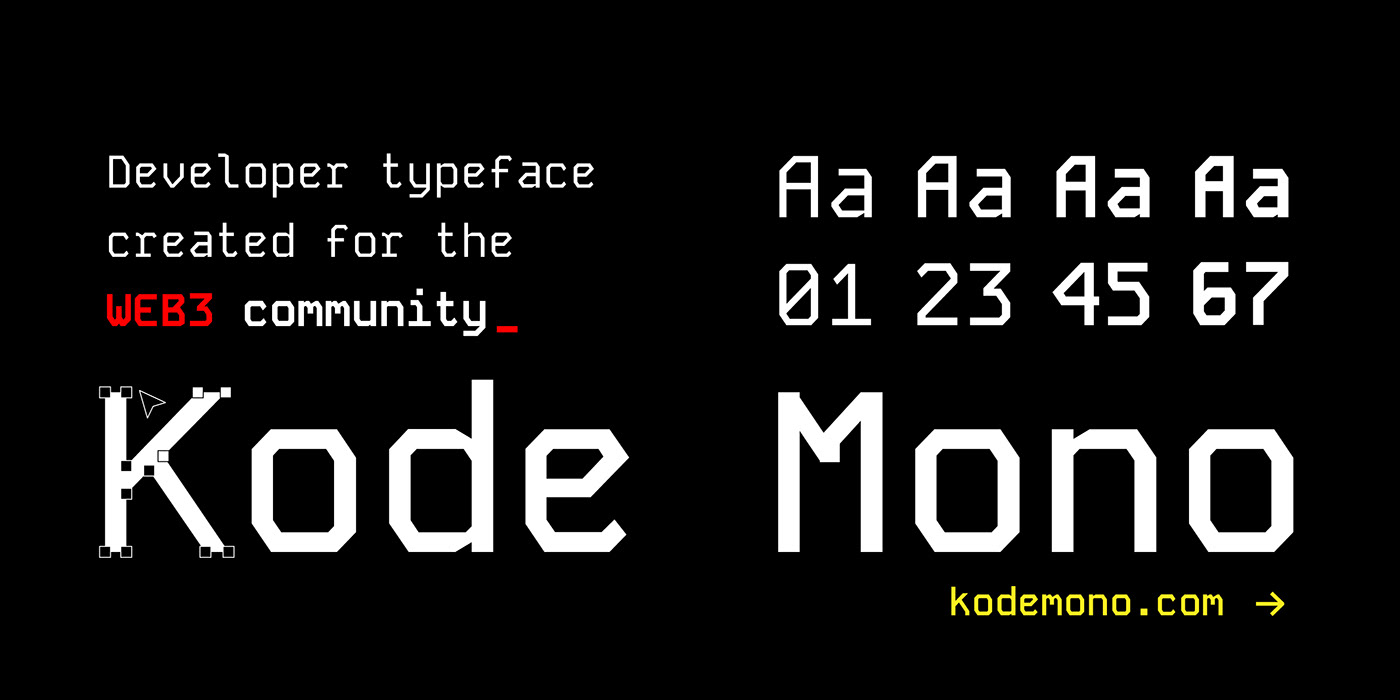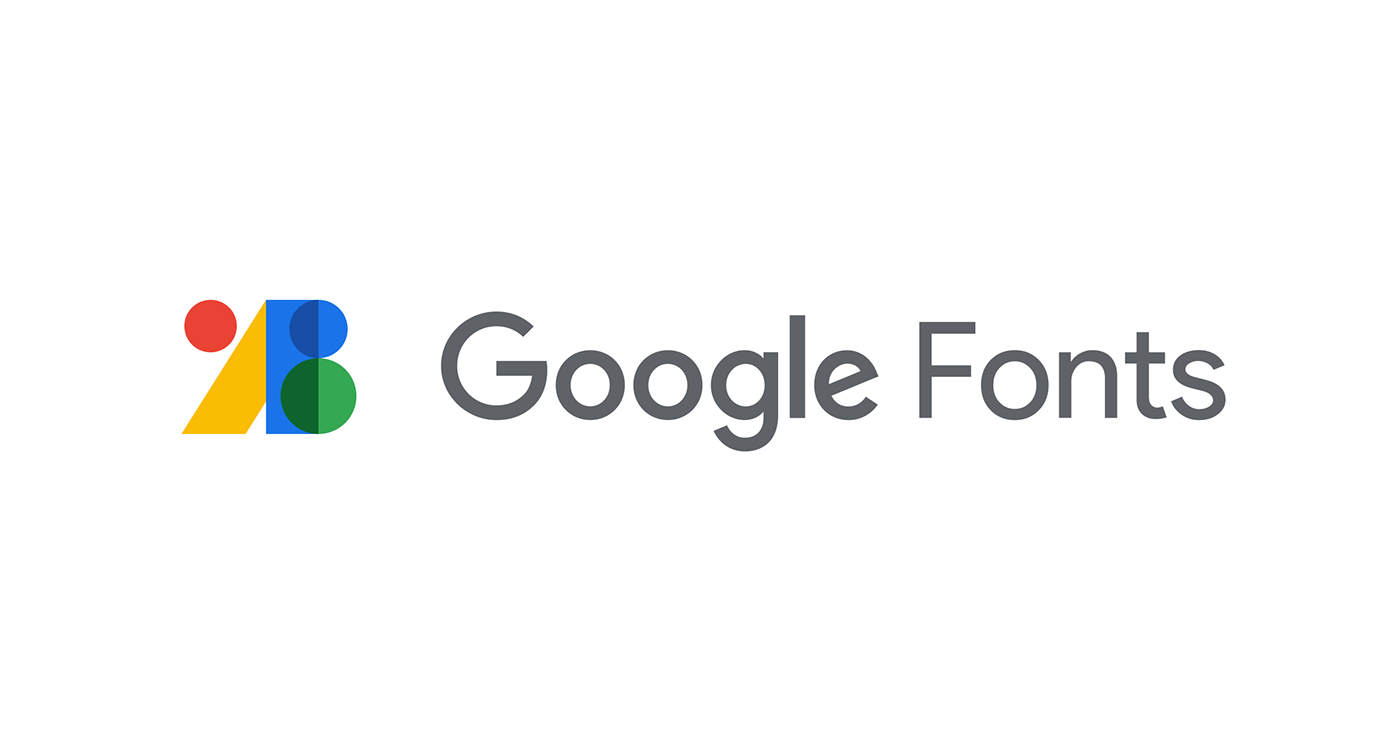
Kode Mono Typeface
"Give every human the tools to build their own internet."
The vision of Kadena. One of the reasons why I chose this company is that it matches my passion for my profession. Which is "devoted to solving complex challenges that enhance human ability through technology."
The need for crafting this typography emerged from the idea that this vision had to be founded on the essential element of the tools we build in our daily efforts, which is also one of the critical elements in every design system and ours, called the Kode Design System. I also want to thank Randy Daal, the Chief Experience Officer at Kadena, for all his support and for coming up with the name "Kode." What then became Kode Mono, a monospace typography for code, simple but not simplistic. Another big thanks to Andy Tang, the Head of Innovation at Kadena, who started using it for his whole OS from day one.

The process and path towards crafting "a custom-designed typeface explicitly created for the developer community" is more important than the result. The reason for making the process publicly available. I enjoyed the ride and hope this also inspires others.

Font Construction
The letter K, which is the initial of Kadena, was the foundation of creating the glyph grid. I used it as the symbol for the vision. The angle of the two diagonals in the letter K is 100 degrees, referencing the 100-year plan.
Modular components
Based on this, I created the digital steels I used to design all the glyphs. The authentic look and harmony of the typography are due to this aspect. This grid gave me a solid foundation to experiment and be creative.





The Ratio
To have a symmetric grid to cover all sides of the glyphs, I rotated the angle so it formed a four-by-three grid. After some extra flipping and rotations, I had all the parts and the K-grid for designing the glyphs.




Benchmarking
During the design process, there were lots of typefaces I inspected. Some examples were Fira Mono, developed and designed by Nikita Prokopov (The Mozilla Foundation), and Menlo, designed by Jim Lyles and Charles Bigelow. I compared the stems, sizes, dimensions, and other characteristics to gather all the best into Kode Mono.

Google Fonts
From the start, I was striving for Kode Mono to be available at the most prominent open-source platform to span the reach to as many people as possible. Once the typeface was "beta ready," I initiated the Google Fonts submission process by creating the first PR (Pull Request) on the 14th of April, 2023. Quickly after, I got a very kind response.



Testing
The build scripts, including the Fontbakery, were helpful. The workflow of design, development, and testing was convenient. I could quickly test on specific Google profile tests on Fontbakery, eventually fixing all failing tests.

The submission decision
After some back and forth, reviews, and bug reports, I got notified that all submissions needed to be reviewed, and based on some internal discussions, it was going to be decided whether a submission would be approved or not. This waiting felt tense because I had no clue what would be decided and when.

But after a little less than a month, I finally got a response that it was decided that all of the work to follow the guide and make the PR on my own should be rewarded with an acceptance.
After acceptance, and all bugs and suggestions were fixed/implemented, Kode Mono was finally live in the first quarter of 2024. 🎉

It was a great honor to get listed as 2nd in the trending list after Roboto, created by Christian Robertson, which is Google's signature family of fonts, the default font on Android and Chrome OS.

What's next?
Kode Mono is available in 2 other major open-source distributions besides Google Fonts.
Debian
Thanks to Gürkan Myczko (Linux System Administrator at ETH Zürich), Kode Mono is included in Debian, a universal Linux distribution.
NixOS
Also, thanks to Enis Bayramoğlu (Lead Software Engineer at Kadena) for incorporating it in the NixOS, an independently developed GNU/Linux distribution that aims to improve state-of-the-art system configuration management.
I am collecting feedback and setting up a continuation plan to extend Kode Mono further. Most likely, based on the first type of feedback, a new axis will be added to the variable font—the width axis, to provide even more variations.
More info
To follow up on this project or get more information, please visit the repository at https://github.com/isaozler/kode-mono or go to kodemono.com. If you have a great idea or have found an issue, please don't hesitate to create a ticket.
I would appreciate starring the project on GitHub and Behance if you like it.
Thanks ❤️ Crafted with love, The Netherlands 2024




